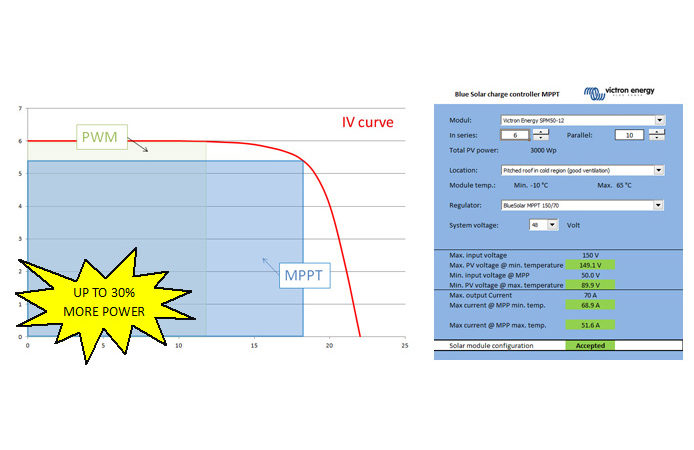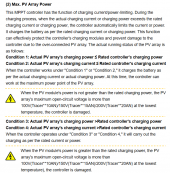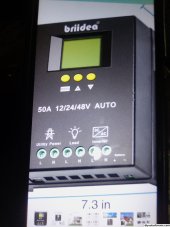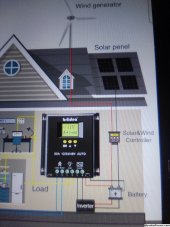John_the_Axolotl
New Member
- Joined
- Jul 3, 2021
- Messages
- 7
Hello everyone,
I hope all is well and the sun is shining for all. I feel like this question has been half answered, but not explicitly, so I was hoping that someone could do so .
.
I have a Growatt SPF 3000TL. It has a 120v - 250v PV input range with a max of 18A from the PV. My question is regarding this max amperage rating. Let's say that I have a PV setup of 3s3p of panels with open circuit voltage of 37 (realistically producing 30v) and short circuit amperage of 8A. In theory, this is under the 250v max, but over the 18A max. Now, in reality, it would likely never produce this much amperage, but let's say that it does. Would the inverter just not use the extra 6A being produced by the PV system or would it just try to use everything and fry itself? In other words, does the inverter have a mechanism to protect itself from consuming too much power from the PV system?
Example: I tell the inverter to charge the batteries at 80A (max inverter settings). The batteries are 50v. This draws 4000W. My PV system is producing 180v, which would require approx. 22A to get to 4000W. Does the inverter know not to cross 18A or will it just pull 22A and risk frying itself?
I hope that I communicated the question well enough. Thank you so much for your time!
Have a wonderful beginning to your week.
-John
I hope all is well and the sun is shining for all. I feel like this question has been half answered, but not explicitly, so I was hoping that someone could do so
I have a Growatt SPF 3000TL. It has a 120v - 250v PV input range with a max of 18A from the PV. My question is regarding this max amperage rating. Let's say that I have a PV setup of 3s3p of panels with open circuit voltage of 37 (realistically producing 30v) and short circuit amperage of 8A. In theory, this is under the 250v max, but over the 18A max. Now, in reality, it would likely never produce this much amperage, but let's say that it does. Would the inverter just not use the extra 6A being produced by the PV system or would it just try to use everything and fry itself? In other words, does the inverter have a mechanism to protect itself from consuming too much power from the PV system?
Example: I tell the inverter to charge the batteries at 80A (max inverter settings). The batteries are 50v. This draws 4000W. My PV system is producing 180v, which would require approx. 22A to get to 4000W. Does the inverter know not to cross 18A or will it just pull 22A and risk frying itself?
I hope that I communicated the question well enough. Thank you so much for your time!
Have a wonderful beginning to your week.
-John






